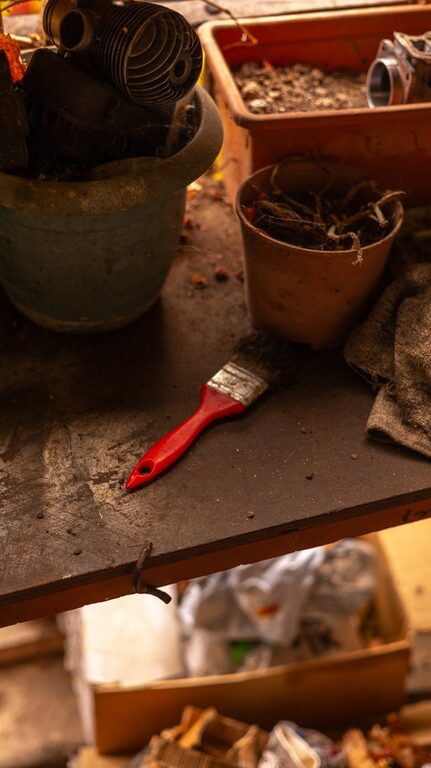Starting a small herb garden indoors is a rewarding and practical way to add fresh flavors to your meals all year round. Whether you have limited outdoor space or want to enjoy gardening during colder months, indoor herb gardening is both accessible and enjoyable. This guide will walk you through everything you need to get started, from selecting the right herbs to caring for them as they grow.
Why Grow Herbs Indoors?
Growing herbs indoors has several benefits:
– Convenience: Fresh herbs are easy to access anytime you need them.
– Space-saving: Ideal for those with limited outdoor gardening space.
– Year-round growth: You can grow herbs regardless of the season.
– Improved air quality: Herbs can help purify the air inside your home.
– Cost-effective: Growing your own herbs can save money over time.
Choosing the Right Herbs for Your Indoor Garden
Not all herbs thrive indoors, so it’s best to start with varieties that adapt well to indoor conditions. Some easy-to-grow indoor herbs include:
– Basil
– Parsley
– Chives
– Mint
– Thyme
– Oregano
– Cilantro
When selecting herbs, consider how you plan to use them in cooking and how much light each herb requires.
What You’ll Need to Get Started
Here’s a list of basic supplies to set up your indoor herb garden:
– Containers: Pots with drainage holes to prevent waterlogging.
– Potting mix: A high-quality, well-draining potting soil designed for indoor plants.
– Herb seeds or starter plants: Depending on how quickly you want to start.
– Light source: A sunny windowsill or grow lights if natural light is limited.
– Watering can: For gentle and controlled watering.
– Fertilizer: A balanced, water-soluble fertilizer to feed your plants every few weeks.
– Labels: To easily identify your different herbs.
Step-by-Step Guide to Planting Your Indoor Herb Garden
Step 1: Select and Prepare Containers
Choose pots that are the right size for your herbs — generally 4 to 6 inches in diameter is ideal for most herbs. Ensure they have drainage holes and place a small saucer underneath to catch excess water.
Step 2: Fill Pots with Potting Mix
Fill each pot with a well-draining potting mix, leaving about an inch from the top to prevent overflow when watering.
Step 3: Plant Seeds or Transplants
– Seeds: Plant seeds according to the packet instructions, usually about twice as deep as their size.
– Starter plants: If using small plants, gently loosen their roots and plant them at the same depth they were growing before.
Step 4: Water Thoroughly
Water your newly planted herbs gently but thoroughly until water drains from the bottom. Avoid letting the pots sit in standing water.
Step 5: Provide Adequate Light
Herbs generally need 6–8 hours of light daily. Place them on a sunny south-facing windowsill if possible. If natural light is insufficient, consider using LED grow lights for 12–16 hours a day.
Step 6: Maintain Soil Moisture and Fertilize
Keep the soil moist but not soggy. Herbs prefer slightly dry conditions between watering. Feed your plants with a diluted balanced fertilizer every 4 to 6 weeks.
Caring for Your Indoor Herb Garden
Watering Tips
– Check soil moisture daily by sticking your finger about an inch into the soil.
– Water when the soil feels dry at that depth.
– Avoid overwatering to prevent root rot.
Pruning and Harvesting
Regularly pinch or trim your herbs to encourage bushier growth. Harvest leaves by snipping just above a leaf node (the point where leaves attach to the stem).
Managing Pests
Indoor herb gardens are less prone to pests, but watch out for aphids, spider mites, or whiteflies. If you spot pests, wipe the leaves gently with a damp cloth or spray with a mild soap solution.
Troubleshooting Common Problems
– Yellowing leaves: Often caused by overwatering or poor drainage.
– Leggy plants: Insufficient light; move herbs to a brighter location.
– Slow growth: May need more nutrients or better watering habits.
– Fungal issues: Ensure proper air circulation and avoid excessive watering.
Tips for Success
– Rotate your pots weekly to promote even growth.
– Avoid placing herbs near heating vents or cold drafts.
– Experiment with different herbs to discover your favorites.
– Use clean tools to prevent disease spread.
Conclusion
Starting a small herb garden indoors is a fulfilling project that adds both beauty and utility to your home. With minimal space and effort, you can enjoy fresh, homegrown herbs year-round. Follow this guide, be patient, and soon you’ll be adding fresh basil to your pasta or mint to your tea, all from plants you’ve grown yourself.
Happy gardening!

